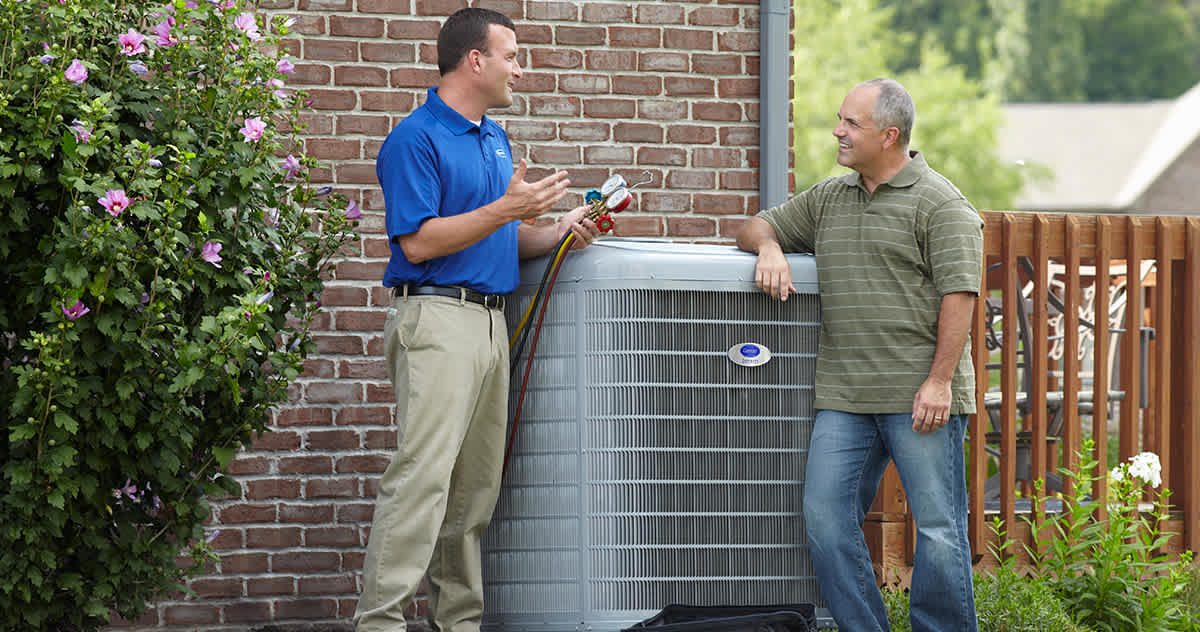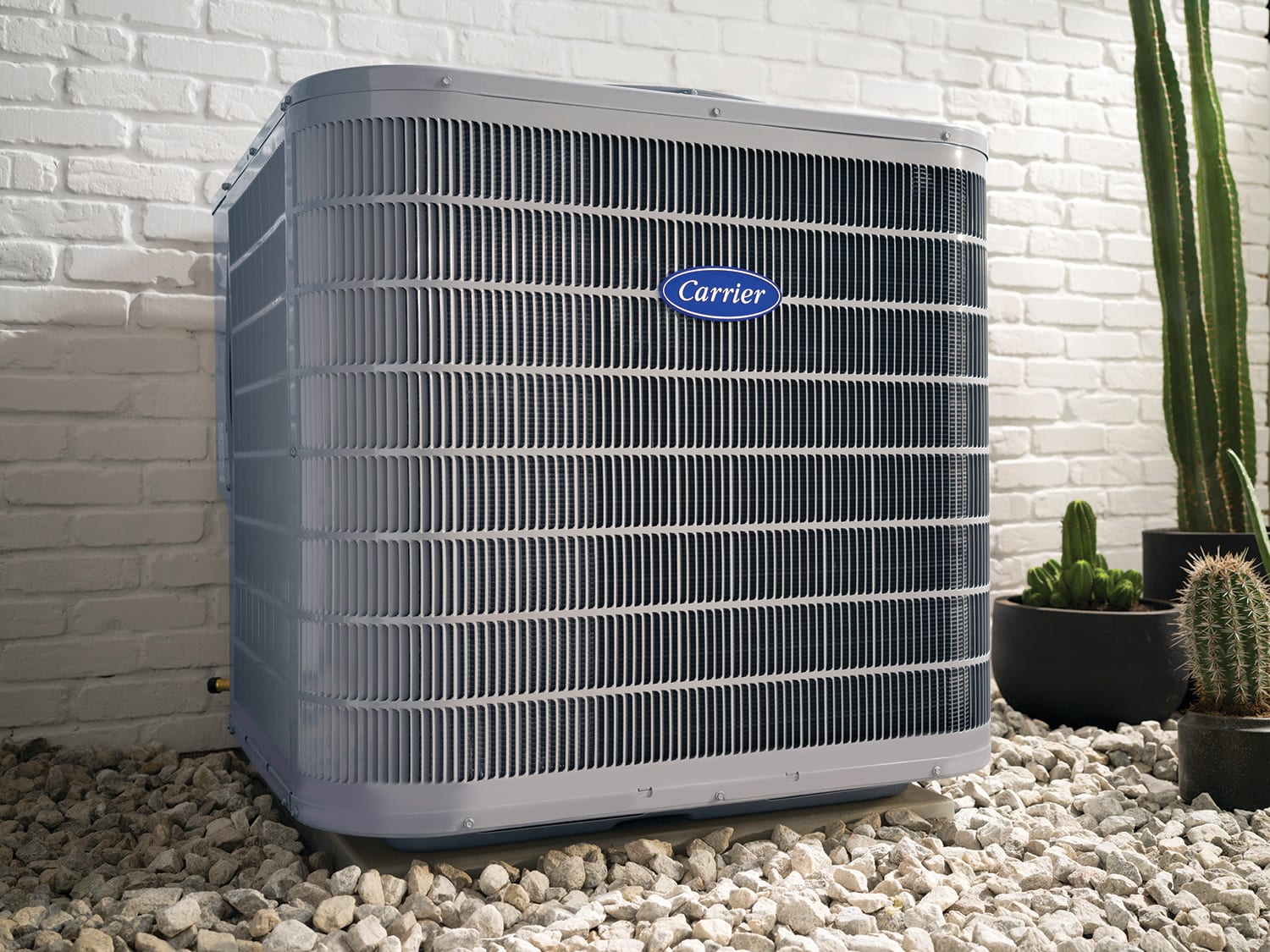AC Parts Guide: What You Need to Know About Air Conditioner Parts
Air conditioning equipment has been around since the earliest years of the 20th Century, when Willis Carrier developed the first modern air conditioners. And while many improvements have been made for performance and efficiency, today’s AC systems operate on the same basic principles.
So, what makes an air conditioner work? Heat transfer. The main components of an air conditioner work together to absorb heat and humidity from the air in your home and return cooler, drier air back into your living areas.
Air Conditioner Parts
Here’s a closer look at how different air conditioner components function together in an air conditioning unit:
As opposed to a furnace, which uses a fuel source to generate heat, an air conditioner transfers heat energy out of your home to leave you cooler and more comfortable. Liquid refrigerant entering the indoor evaporator coil transitions from a liquid to a vapor, absorbing heat from indoor air. The resulting cooler air is returned to your living areas by an indoor blower fan. At the same time, the hot, vaporized refrigerant exits the home through copper tubing into the compressor in your outdoor unit. The compressor converts the refrigerant into a high pressure gas and sends it to the outdoor condensing coil. Airflow across the outdoor coil absorbs heat energy from the refrigerant and the resulting warm air is blown out and away from the exterior unit.

What Are the Main Parts of an Air Conditioning System?
Today’s residential air conditioning equipment usually consists of two sections - an indoor unit and an outdoor unit - to create what is referred to as a split HVAC system. The outdoor unit is what most people recognize as their air conditioner. It houses the compressor, the AC condenser coil and an air circulating fan. The indoor unit is typically either a furnace or a fan coil with a blower fan and the evaporator coil. While there are a number of additional components involved, including electronic controls, sensors, and tubing, the main four parts of air conditioning systems are the two coils, the compressor and the expansion valve.
- Evaporator Coil - Also referred to as the “indoor coil,” this component is housed inside the fan coil or mounted to the exterior of a furnace. Compressed liquid refrigerant enters the evaporator coil where it expands into gas and absorbs heat energy from indoor air.
- Compressor - Refrigerant in gaseous form exits the home through refrigerant tubing and enters the compressor in the outdoor unit. The compressor pressurizes refrigerant, turning it back into liquid form before it enters the condenser coil.
- Condenser Coils - The condenser coil typically makes up the majority of the exterior of your outdoor unit. A condenser fan pulls outdoor air through the condenser coil to absorb heat from the liquid refrigerant and carry it out into the environment.
- Expansion Valve - The expansion valve is typically located inside your home near the indoor unit, and connected to the incoming refrigerant line. It creates a pressure drop to convert liquid refrigerant back to a gaseous state so it can absorb heat. The gaseous refrigerant enters the evaporator coil and the cycle continues.
Common Problems with AC Parts
As you would expect with any mechanical system, your AC equipment requires periodic AC maintenance to keep operating at its best. Your air conditioning system includes an air filter that should be inspected or replaced every 30 - 90 days, depending upon the manufacturer’s recommendations. Learn more about how often to change air filters. Keeping the filter properly maintained will allow your system to operate more efficiently and reduce the possibility of issues associated with a dirty or clogged filter. These include weak airflow, short-cycling (turning on and off quickly), higher utility bills and more.
Additional issues common with AC equipment include:
- Frozen AC or frozen evaporator coils
- Dirty/clogged evaporator or condenser coil
- Not blowing cold air
- Not turning on at all
- Outdoor unit leaking water
- Outdoor/indoor unit making unusual noises
While some of these issues may seem alarming, many can be resolved simply. One way to avoid potential pitfalls is to schedule regular system maintenance by a professional HVAC technician. A regular air conditioner tune up will help keep your system operating at its best. It will also allow your local dealer to check for potential issues that can be fixed quickly, easily and at lower cost than more serious air conditioner service.
Find A Carrier Expert For Carrier AC Parts Near Me
Your local Carrier dealer can provide expert HVAC system diagnosis and qualified AC repair. They can assist with the issues previously mentioned about AC parts and more. If your system is acting up, don’t wait. Find a Carrier expert today.

Frequently Asked Questions About AC Parts
LEARN MORE ABOUT AIR CONDITIONERS
- Find Out How Do Air Conditioners Work
- Troubleshoot an Air Conditioner tips
- Factors and variables - "How Long Do Air Conditioners Last?"
- Is your Air Conditioner Not Cooling?
- Why you should get an AC Tune Up
- Learn about air conditioning installation

